Visualising Movement, Time and Space
Experiment 1: Visualizing the walks
Gallery Installation:



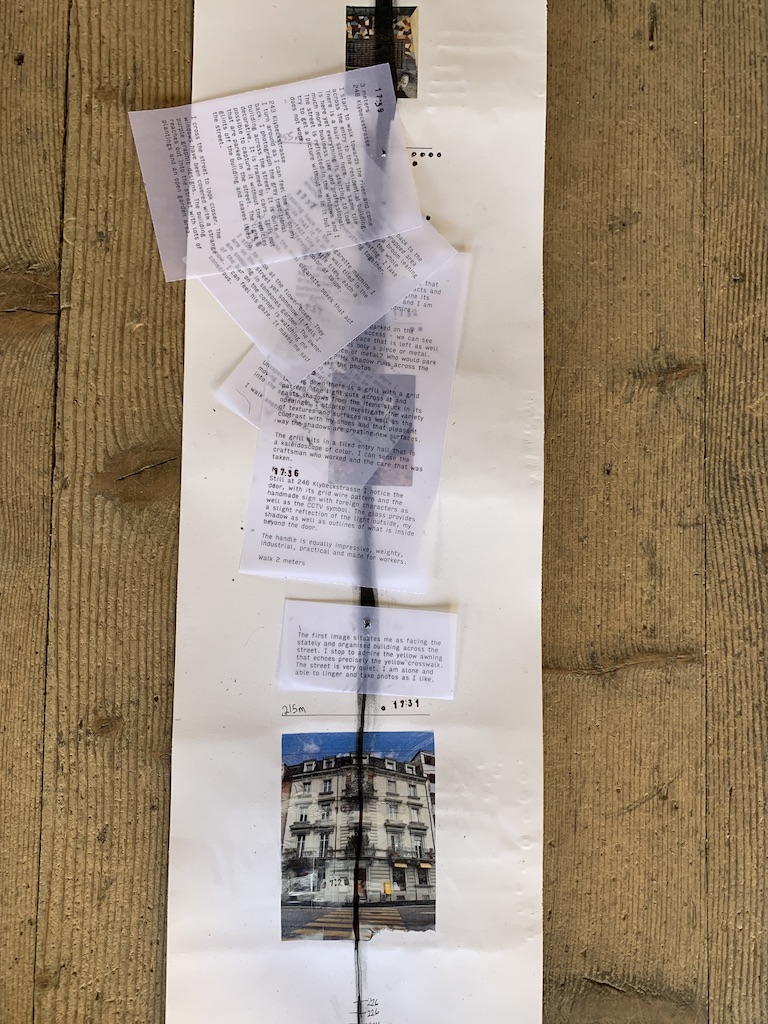


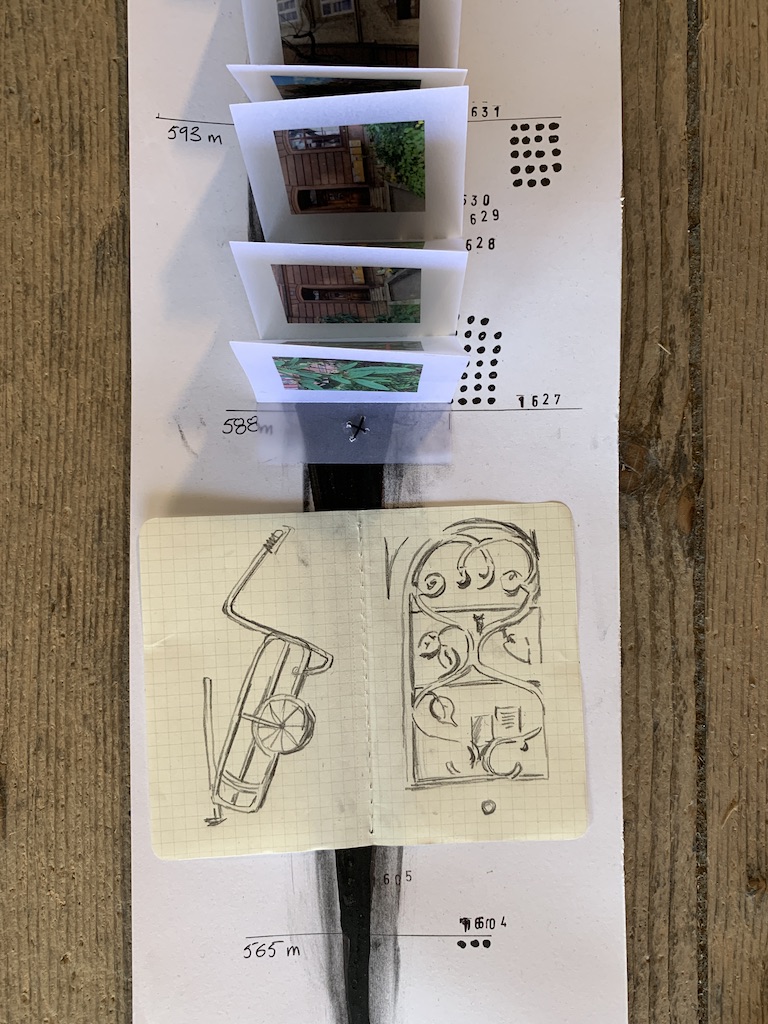


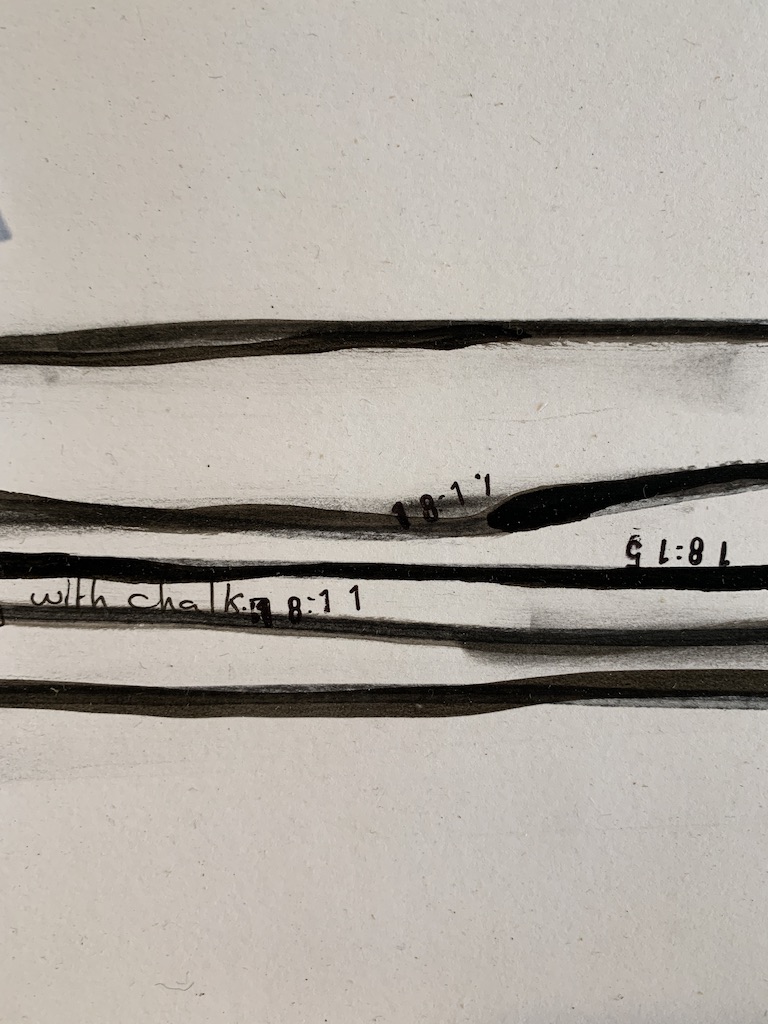
︎March 25, Final Artwork Details
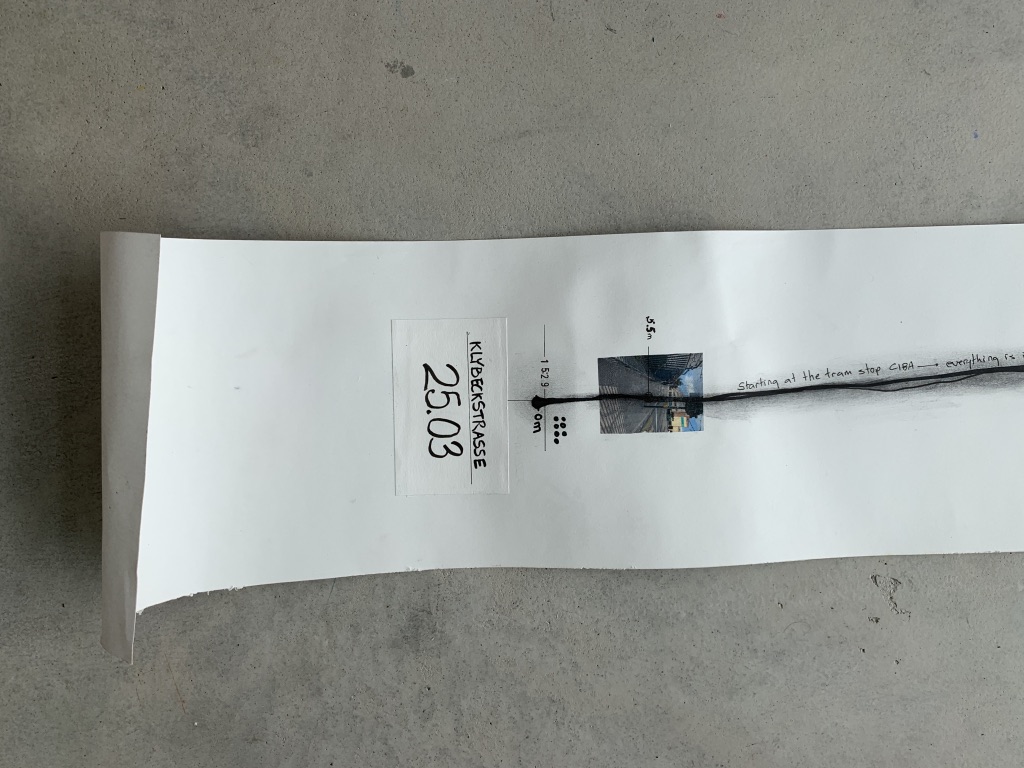








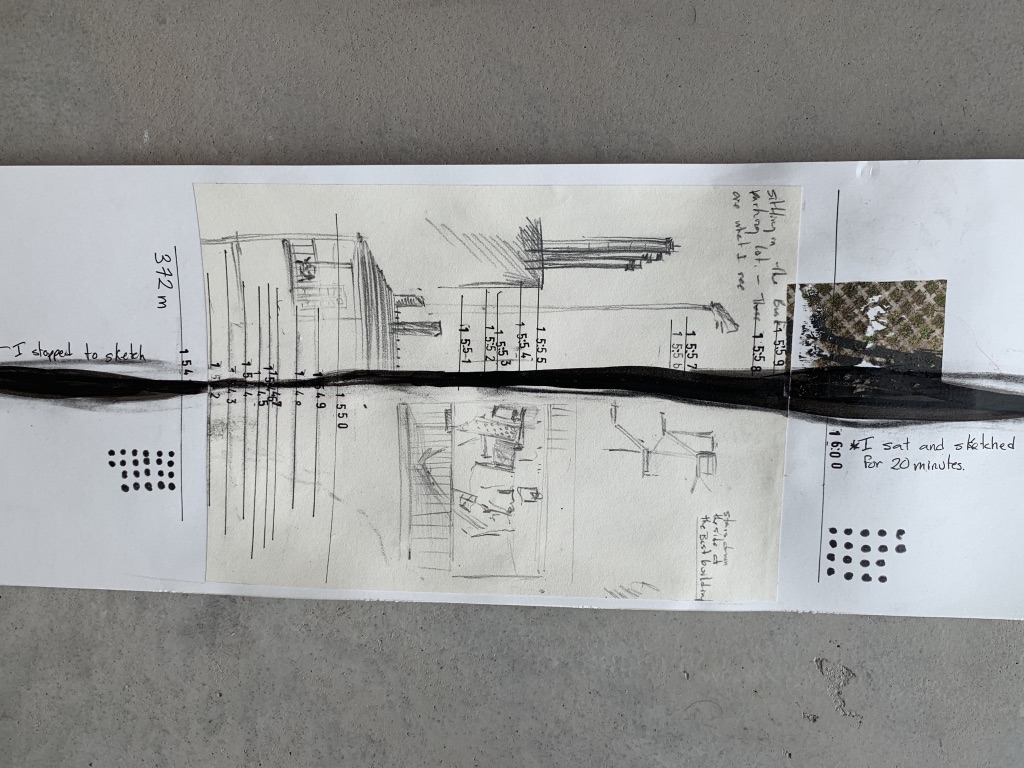



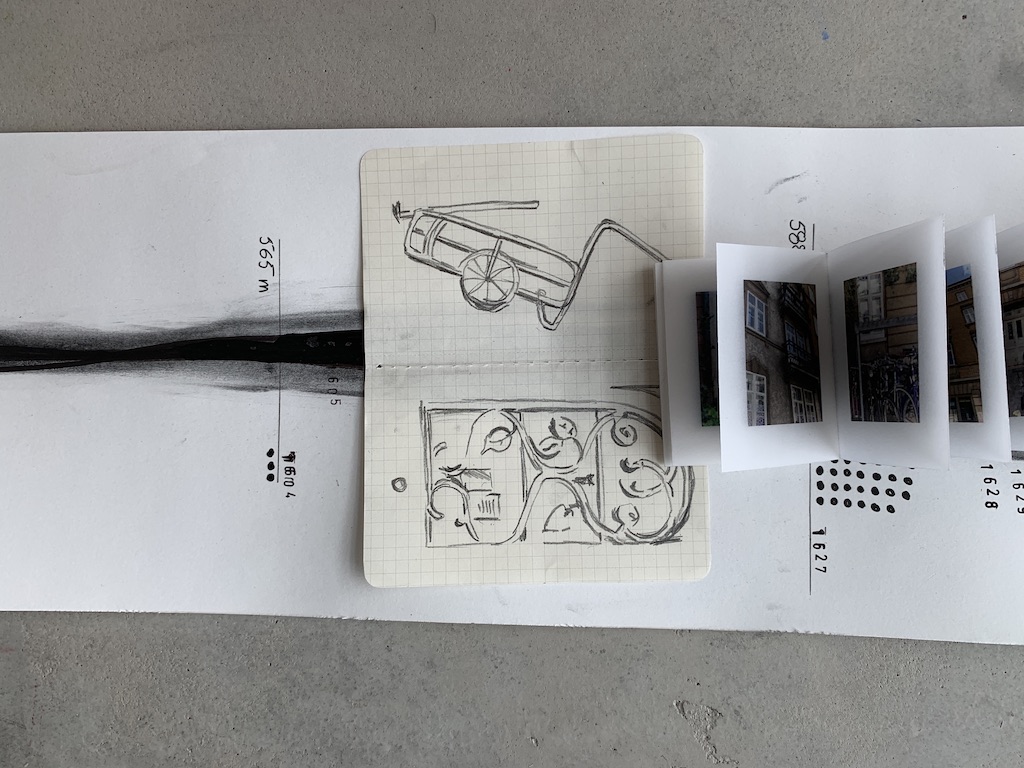




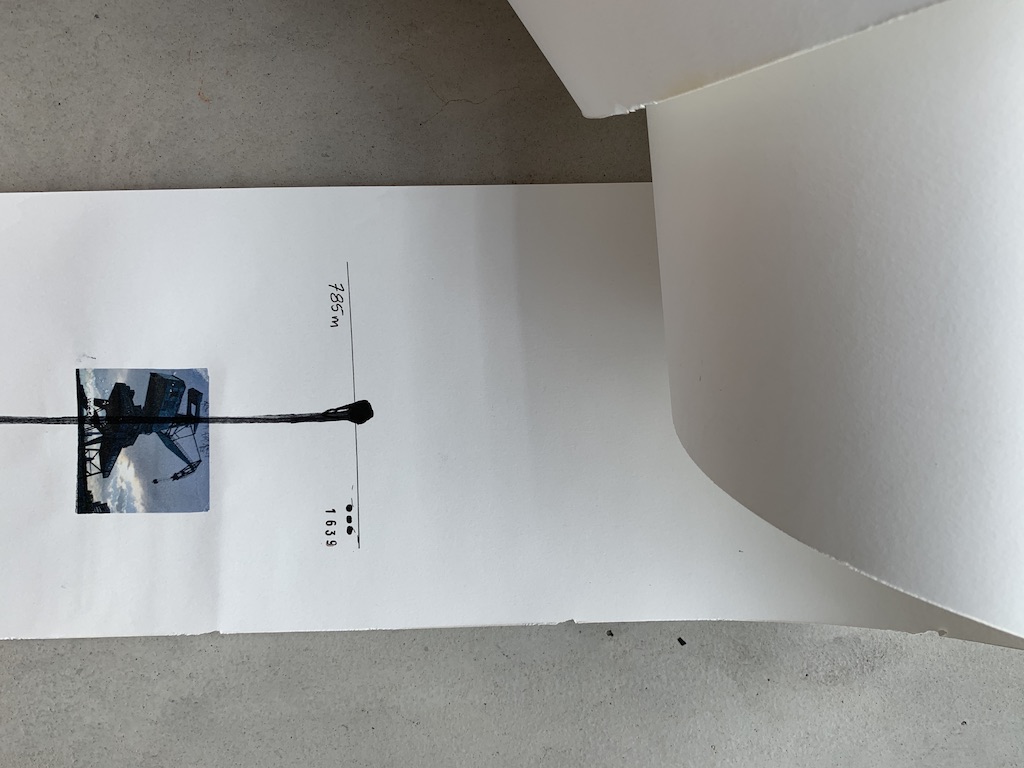
︎May 14, Final Artwork Details
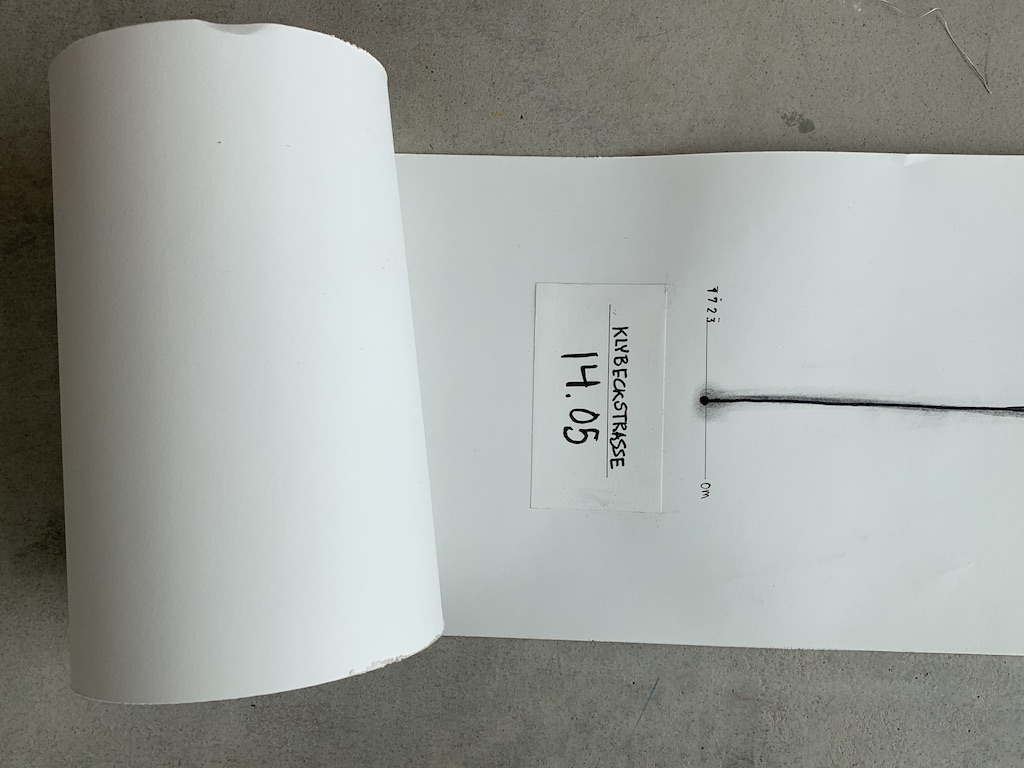
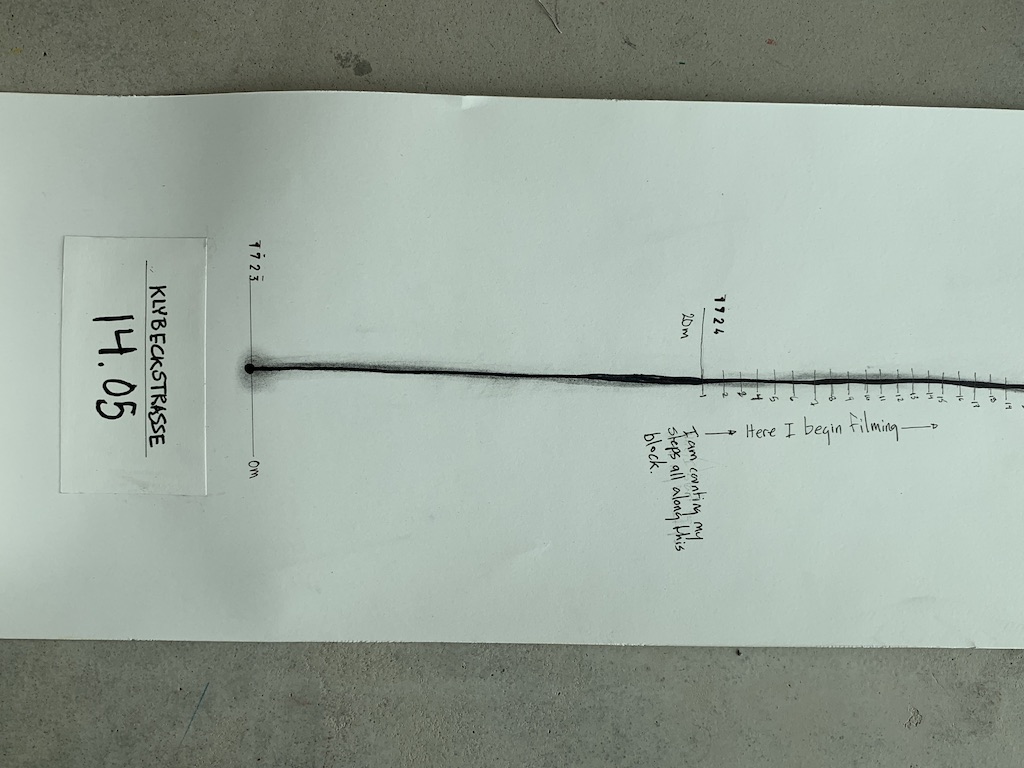

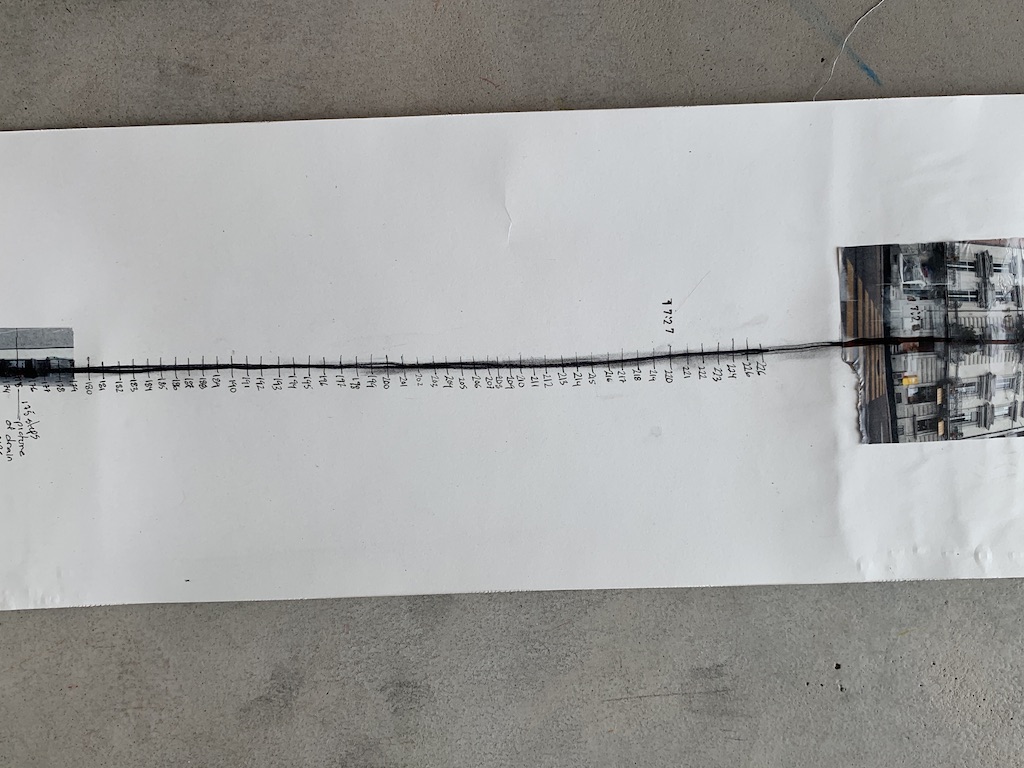

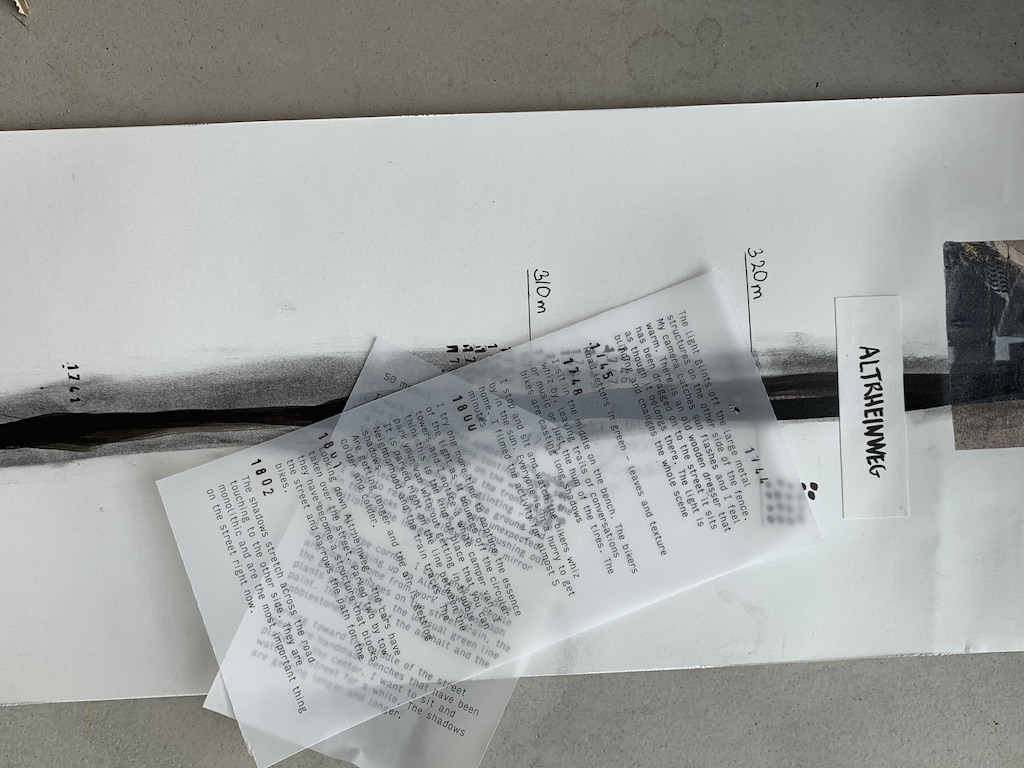





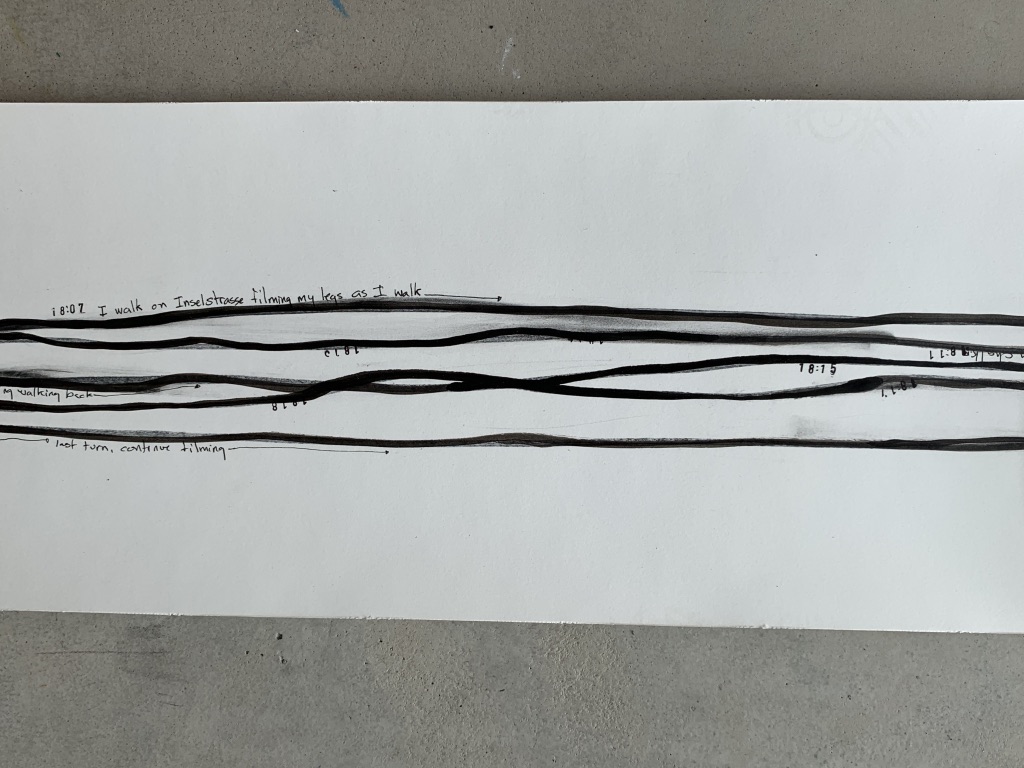

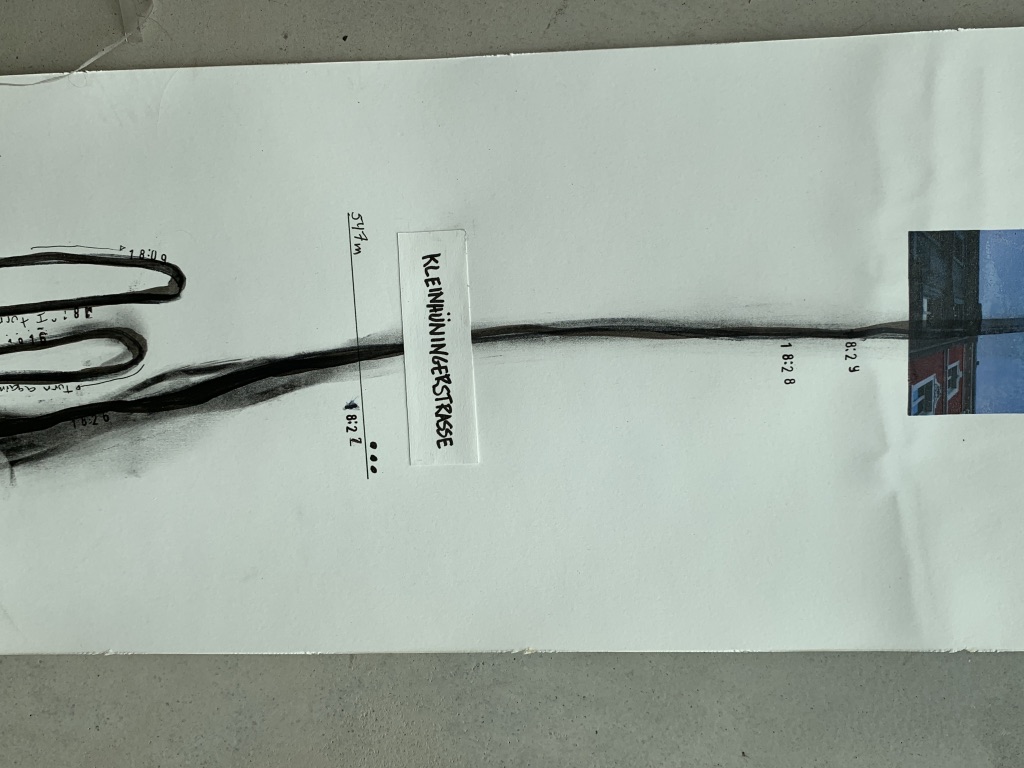
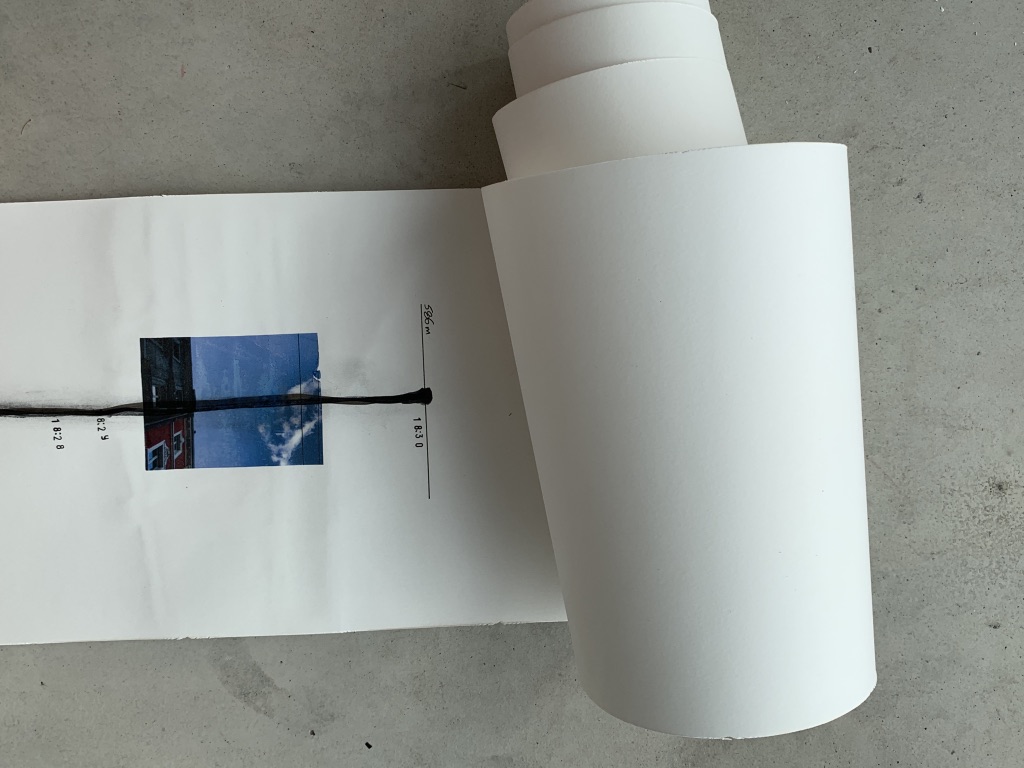
June 16, Final Artwork Details



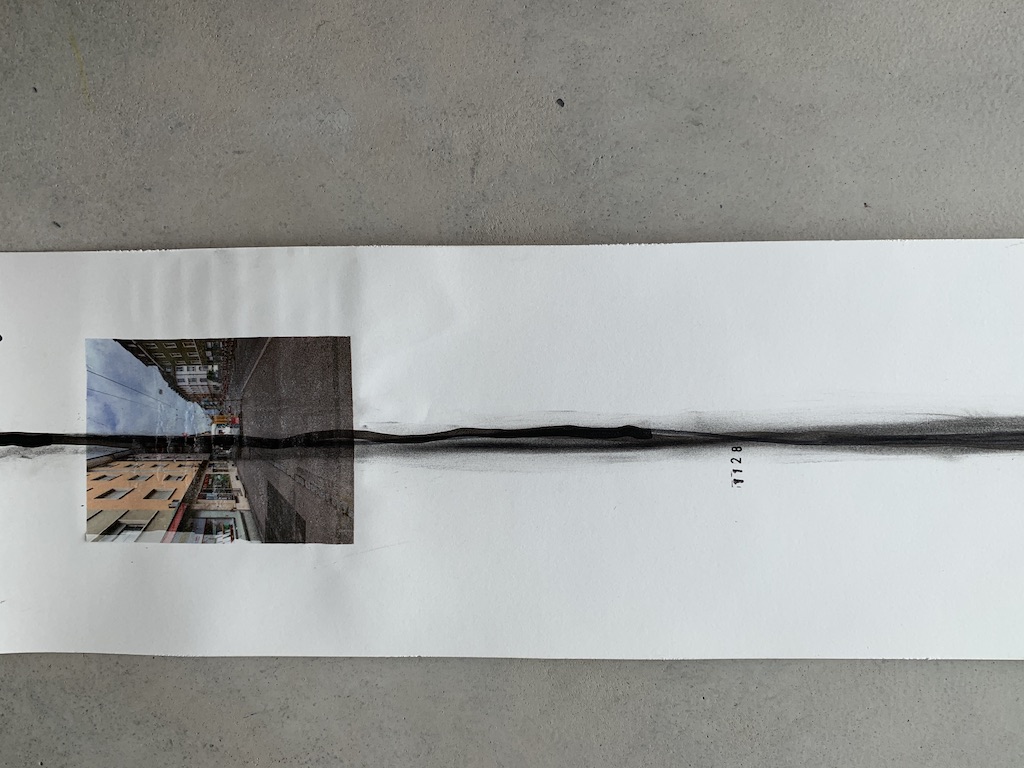
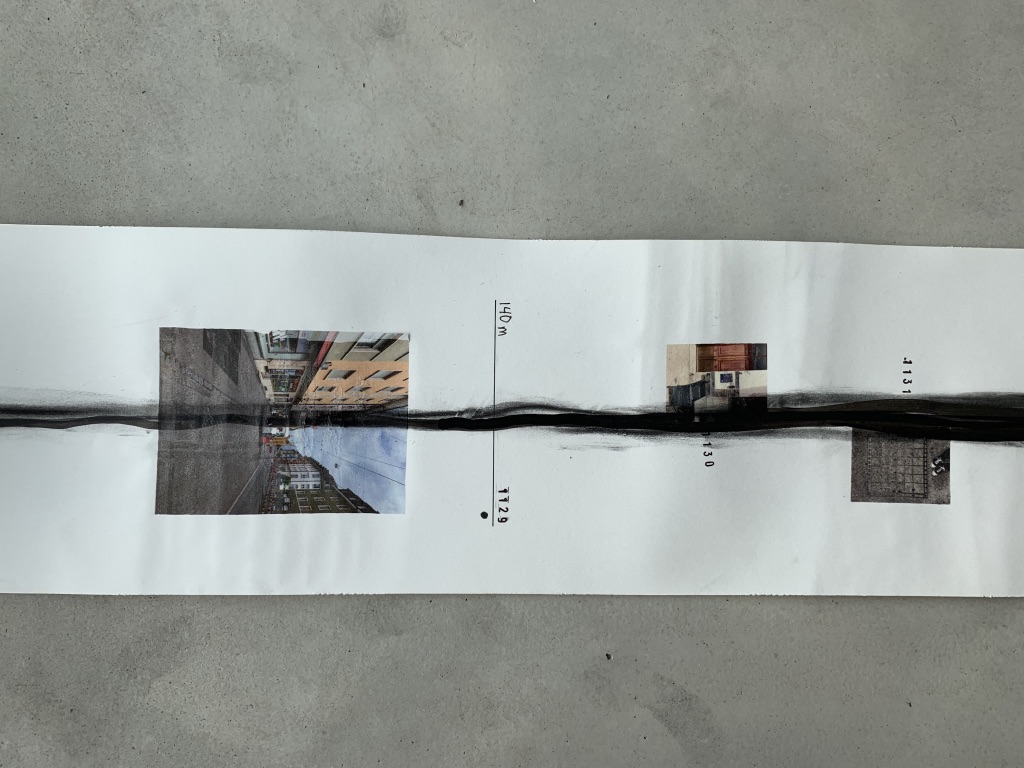









︎Initial Experiments








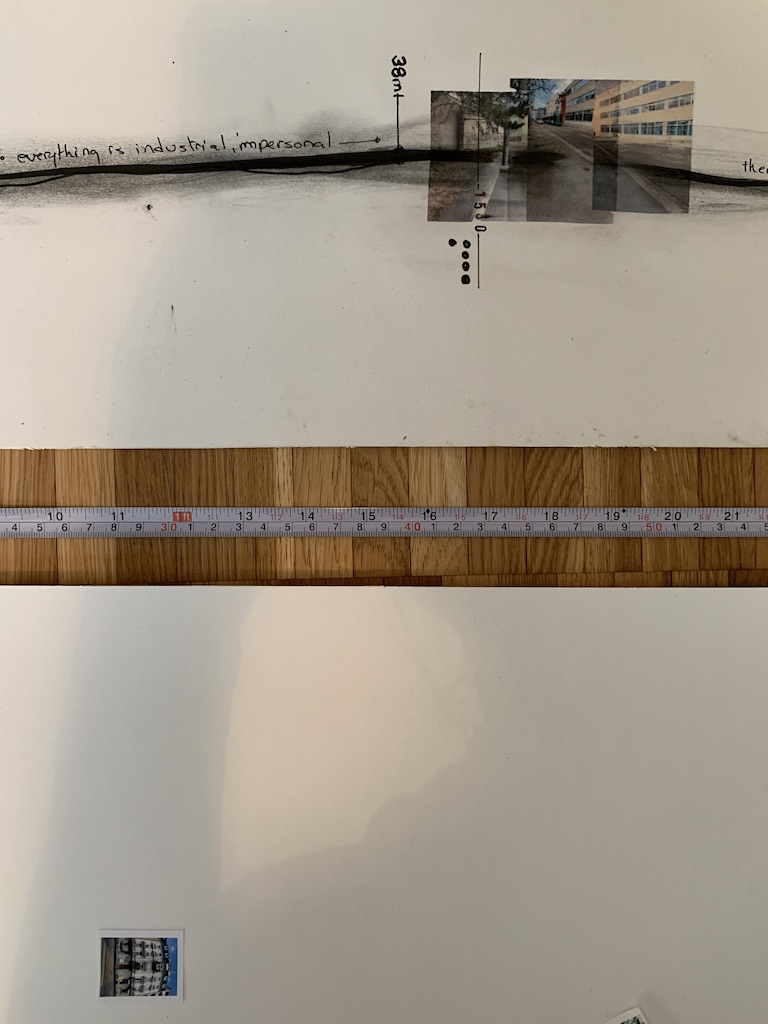
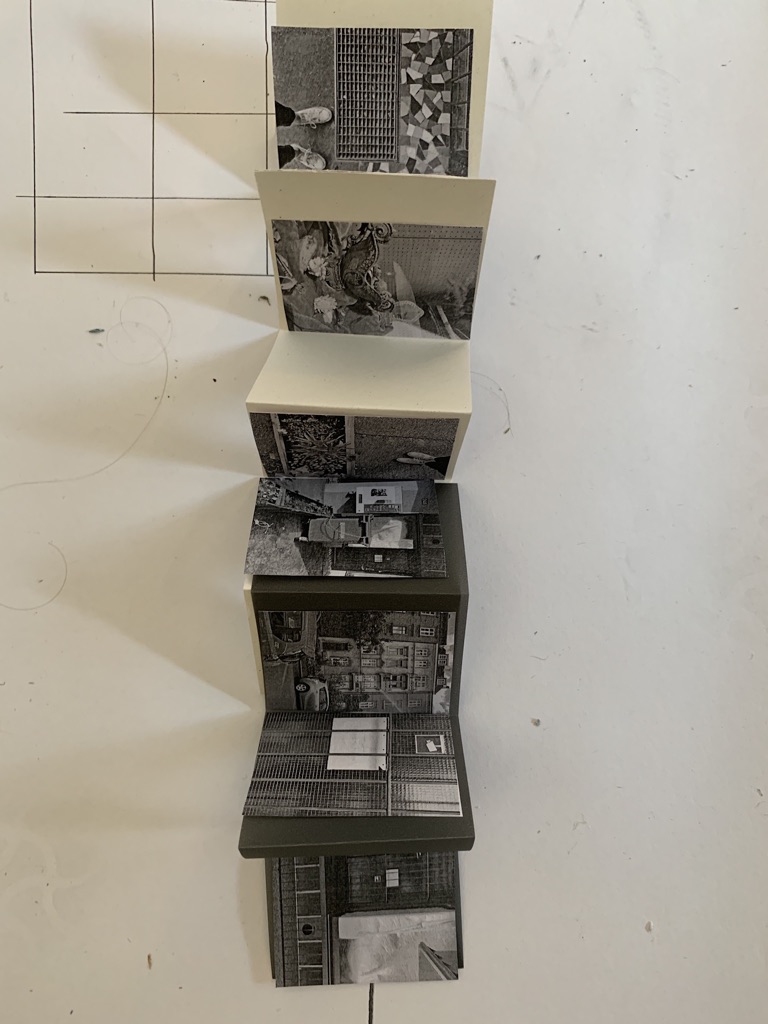
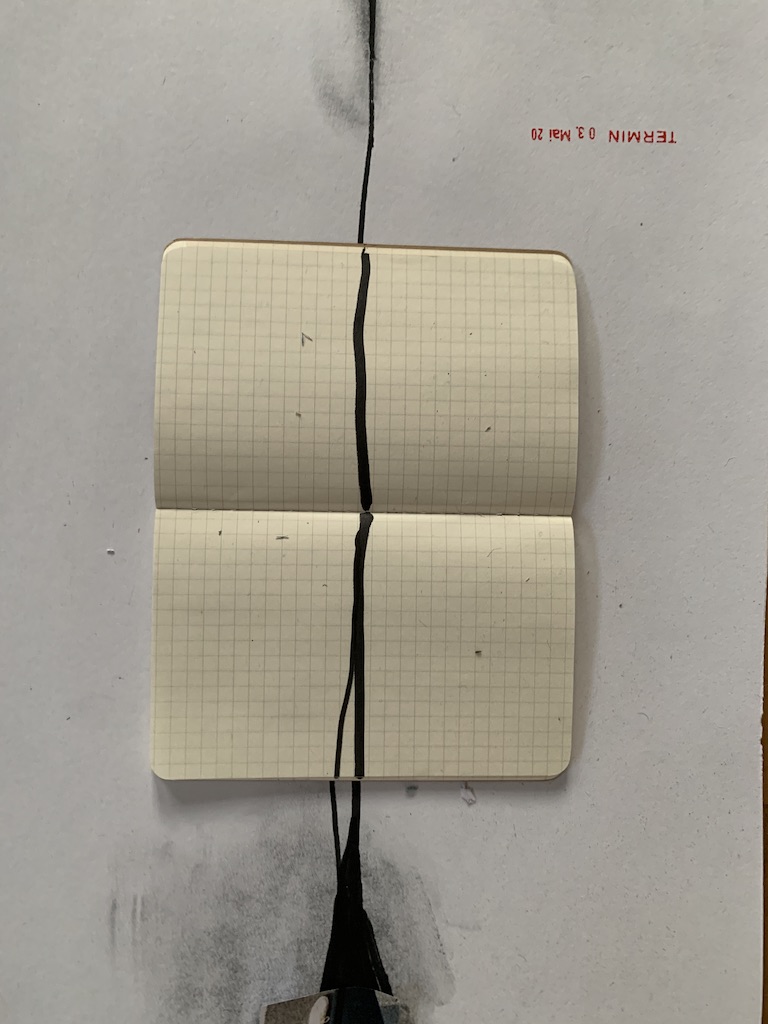
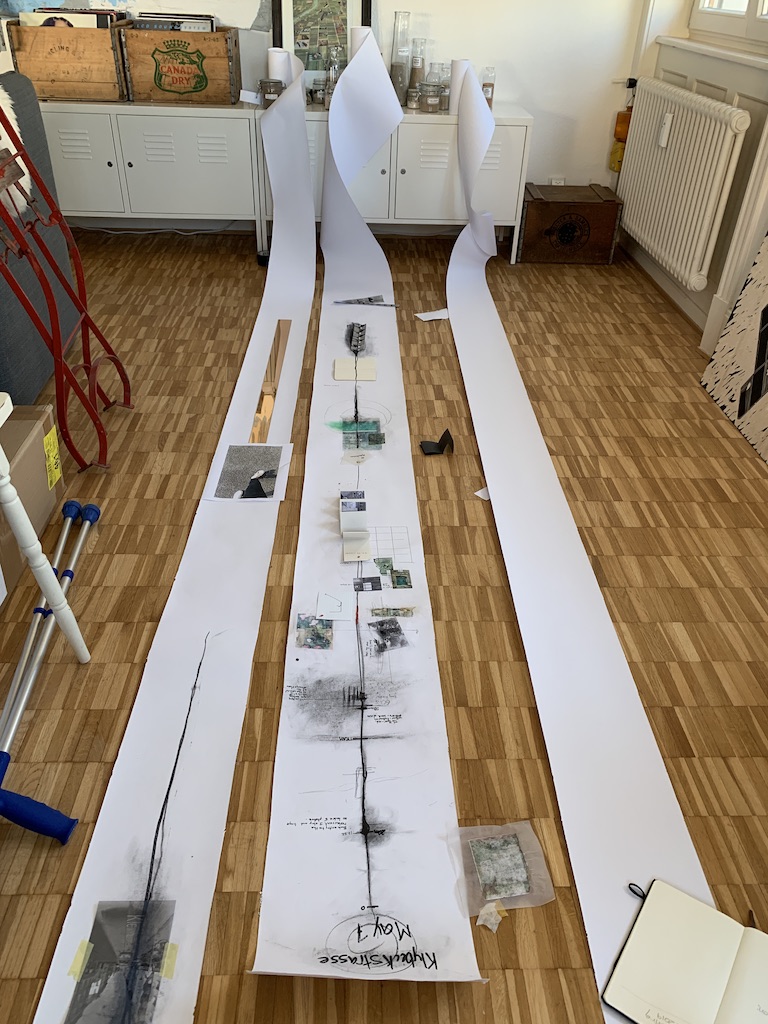
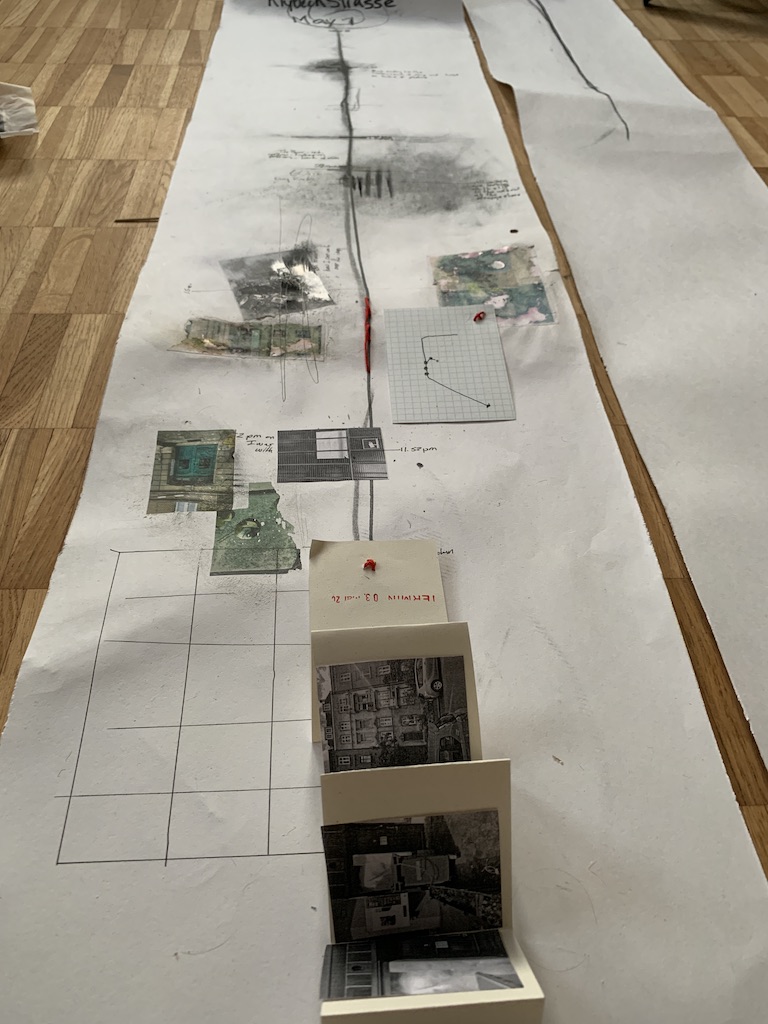




In this series of artworks, I am visualizing my walks. My walks existed in my mind as detailed journeys through time and space. There was a pace, a distance covered over time, fragments of images, fleeting impressions gathered along the way, experiences created by my movement. The walks existed in my mind in a tactile physical manner. However, when I discussed my walks with others they were reduced to piles of data and images, they did not have the density or time-space element that I saw in my mind. This disconnect from what I had experienced and what I was presenting to others became the starting point for this experiment.
I began working out how to visualize the elements of density, time and space and did an initial sketch where I attempted to lay out the idea of the walk as marks and densities over time.
I realized that I saw each walk as linear in my head and so I began my first experiments with capturing that essence, experimenting with cash register tape and then with thermal fax machine paper. I rolled them out and began to measure off the distance, add narratives, time indications and indications of the density of video or image accumulations.
I was inspired in these experimentations by Chinese landscape scrolls, as described here by Ana Moya Pellitero, "The eyes of the viewer moved freely on the rolling surface of the paper, concentrating the attention in each part of the painting that the scroll was discovering. There was a temporal factor in the observation of the representation. The viewer was free to observe and choose for a continuous or discontinuous narrative looking at the consecution of settings."
I ordered heavy rolls of drawing paper and then cut them into various sizes ranging from 15 to 30 cm wide with the length determined by the length of the walk. I sketched out each walk in slightly different ways, but always in proportion to the length walked, and depending on how they were experienced. The resulting eight visualized walks are intended to be laid on the floor and will require the viewers to step around and walk through them, further emphasizing the bodily movement of the walks.
Visualising Tactility Time and Movement
“The journey anywhere in the urban environment was
the best situation for the representation of time-space relations.
In the journey, there were fleeting impressions and visual
fragmentations, produced by the moving through different spaces, those fragments created an abstract mental map of
an experience suspended in time.”[1]– Ana Maria Moya Pellitero
In creating the scrolls shown above, I considered specifically the complexities of visualizing movement, time and space, concepts which are integral parts of the experience of urban space, and essential in our understanding of the space. Yi-FU Tuan elaborates on how movement changes our perception and also defines the experience, "Each action that we take in a space changes slightly what we perceive at that moment. This ever-changing reality of urban space does have constants though, reoccurring points and images that define the experience and can be used as a tool to understand and visualize the space."[2]
These slight movements that change our perception create new narratives and images with each step. A common approach to the visualization of time and movement in space is through a written or cinematic narrative that weaves together the many small instances and elements of the experience to create a whole.[3] "And indeed, how can a 'cityscape' (conceived as a unity) be more accurately portrayed than by sequences of words, images and sounds - that is, by means of narrative (literary or cinematic) techniques? What may be called a "tactile knowledge" is thus dynamic and fragmentary."[4]
However, there are possibilities to visualize the concepts of movement and time outside of cinematic or written narrative methods. Artists began to explore this idea in a focused manner after the invention of photography, which allowed them a more detailed visual analysis of the aspects of movement and time. In particular, the Impressionists used the instantaneous nature of photography to look at frozen motion and study the light and atmosphere of moments in time.[5]Intellectuals and artists aimed to capture the experience of movement by utilizing some of the images they had seen in photography where the movement was captured in a single moment. These kinds of effects to show movement included the blurring of the parts of the image that were moving or cropping figures halfway out of the frame to indicate their continued movement. Quick and arbitrary framing indicated speed and mimicked the instant moment of photography. Moya Pellitero describes this method of framing, "also at street level, movement was depicted by the capturing of an instant that had already disappeared. Casual situations of urban life were framed using consciously decentered composition in which figures, vehicles and the street scene were drastically interrupted by an arbitrary frame."[6]
Photography's ability to stop time allowed for not only the stopping of movement but also for the revealing of the stillness and atmosphere of a single moment over an extended period of time. These extended visual studies allowed for a new way to look at light and color and combined with the framing formed to create new pictorial aesthetics, which the artists used to transfer some of the "subjective gaze to the objective photography."[7]
Time is equally difficult to visualize but is an integral part of our visual experience of urban space. The problem with time is that at the moment we register it, it has already passed. Visualizing time means we need to reconstruct things in our mind. "A temporal duration, however, no matter how short it is, cannot be apprehended at once. Once we are at the end of it, the beginning can no longer be perceived" […] "In other words. Any knowledge of time presupposes a reconstruction on the part of the knower.”[8]
The ability to freeze time also allowed more space to reflect on the moment opening up the possibility of creating new memories or images in the mind. In this manner, time can also be stretched, allowing us to see the moment before or after the depicted moment. This ability to see beyond the depicted moment allowed the viewer to create imaginary narratives concerning the future or the past. [9]
In modern examples, artists have worked with movement and time not only to describe them but also to allow the movement in time to become the art. Land artists showed time and movement by leaving traces, for example, Robert Smithson’s Spiral Jetty (1970) or Richard Long’s formative piece: A Line Made by Walking (1967) wherein “he walked backwards and forwards until the flattened turf caught the sunlight and became visible as a line.”[10] In this way, the movement and the trace itself became the work of art.
[1] Moya Pellitero, A.M., 2007 p.225
[2] Tuan, 2001 p.390 [3]Madaline Diaconu discusses this approach in her essay Matter, Movement, Memory, Footnotes to an Urban Tactile Design
[4] Paetzold, 2011 p.23 [5]Pellitero discusses the impressionists use of photography not only as an investigatve tool for motion but also to understand color and light. p.154 [6] Moya Pellitero, A.M., 2007 p.225
[7] Moya Pellitero, A.M., 2007 p.176
[8] Tuan, 2001 p.392
[9] Moya Pellitero, A.M., 2007 p.225
[10]Tate (Tate museum website, A Line Made by Walking Gallery label, May 2007) [11] Moya Pellitero, A.M., 2007 p.102



